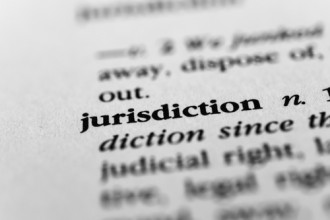
December 9, 2009
Federal Circuit’s Holding that Patent Did Not Transfer to Plaintiff Prompts Dissent to Deliver a Lecture on Contract Law
Tyco Healthcare Group LP. v. Ethicon Endo-Surgery, Inc., 2008-1269, -1270 (Fed. Cir. Dec. 7, 2009).
Contract term excluding transfer of “[a]ny and all patents and patent applications relating to any pending litigation involving USSC” as listed on an omitted schedule flawed ownership and standing.
The Federal Circuit affirmed dismissal without prejudice because Tyco had failed to prove it owned the asserted patents and thus had standing to sue. U.S. Surgical Corporation [“USSC”], which had held rights to the patents, transferred to Tyco business and assets excluding “patents and patent applications relating to any pending litigation involving USSC.” The agreement stated pending litigation was listed on a nonexistent Schedule 4.21. The district court relied on a settlement agreement USSC executed the same day involving other patents and different Ethicon products to hold that all of USSC’s patent portfolio, including the asserted patents, were related to litigated patents in the settlement. The Federal Circuit dismissed this reasoning because the settlement agreement addressed more than pending litigation, encompassing interference proceedings and other matters.
The Federal Circuit instead used a dictionary definition (“associated, connected”) to interpret “related to pending litigation” as any patent or application “in the same family or so related in subject matter that they were or could have been reasonably asserted in or affected by a litigation pending” when the agreement was executed. Tyco, then, had to prove that the asserted patents could not have been asserted in or affected by any litigation then pending, and, because the Schedule 4.21 of pending litigation was missing, Tyco had to prove there was no unidentified pending litigation.
Dissenting, Judge Newman reminded the majority that contracts are interpreted to give effect to the intentions of the parties. Tyco’s VP testified that the asserted patents transferred under the agreement with USSC; a third party bears the burden of proving the intent was otherwise, and Ethicon provided no contrary evidence. It was undisputed that the asserted patents were not affected by pending litigation when the USSC transfer agreement was signed. The subject matter of the patents in the settlement agreement (surgical staples and trocars) was distinct from that of the asserted patents (surgical devices for ultrasonic cutting and blood vessel coagulation). Even setting aside Tyco’s unrebutted evidence, Judge Newman believed Tyco’s and USSC’s intent in executing the transfer agreement to be thwarted by the court’s interpretation, which produced “the absurd result whereby no USSC patent [and no assets] can be deemed to have been transferred, merely because Schedule 4.21, listing public information, was missing.”
This case can be found online here.




































